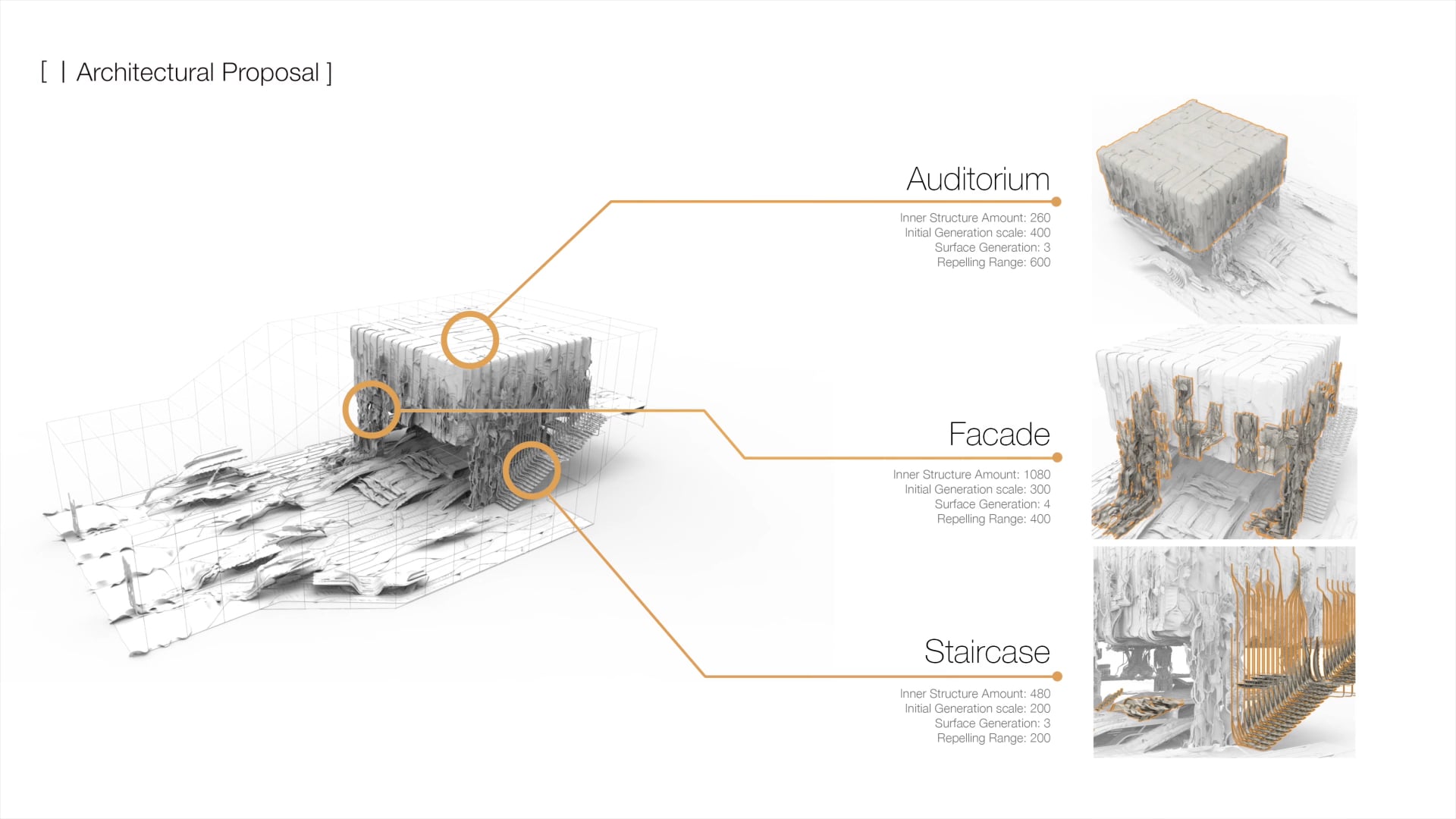
Inspired by the age-old craft of felt-making and differential growth found in nature, this project researches for the development of a new craft and material for the production of innovative architectural structures at various scales.
Flextiles focuses on introducing the potential of fibrous wool material as a new building block in architecture, for creating organic structures that smoothly transition from soft to hard textures according to varying functions.
Incorporating robotic technology to needle felt and interlock the fibers into felt fabric sheets, a designed layout of inbuilt tubular patterns was injected with expandable foam inside the fabric to create a self-supporting, light-weight textile composite. Utilizing this crafting technique, architectural elements on different scales were built to evolve a material specific design language and create an innovative system inspired by the natural properties of felt fibers.
The design process begins with the intricate formation of patterns varying in thicknesses and layering, specifically depending on light porosity and structural performance. Exploring these design constraints, the material design was embedded into an innovative cladding system with varying surface treatments according to function and spatial experience.
The material system naturally controls light filtration, sound levels, and overall atmosphere, creating a new typology of spaces in architecture.
Team Members: Noura Mheid, Hameda Janahi, Minzi Jin, Zoukai Huo
Supervised by: Daniel Widrig, Soomeen Hahm, Stefan Bassing, Igor Pantic
Research conducted at the Bartlett School of Architecture, University College London. Part of the MArch Architectural Design postgraduate program
comments